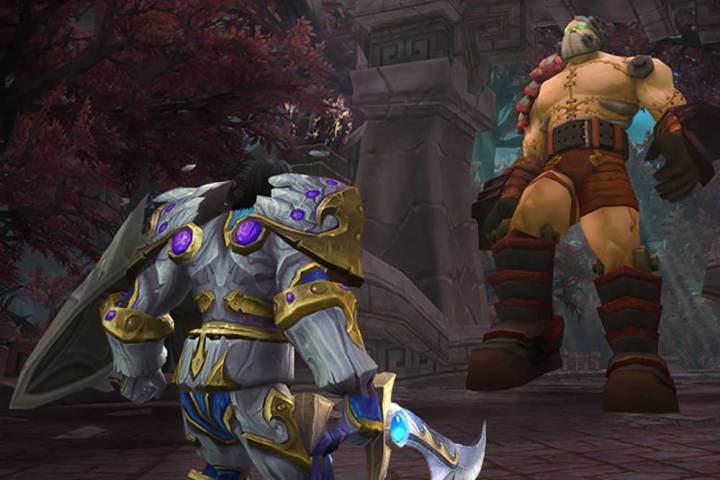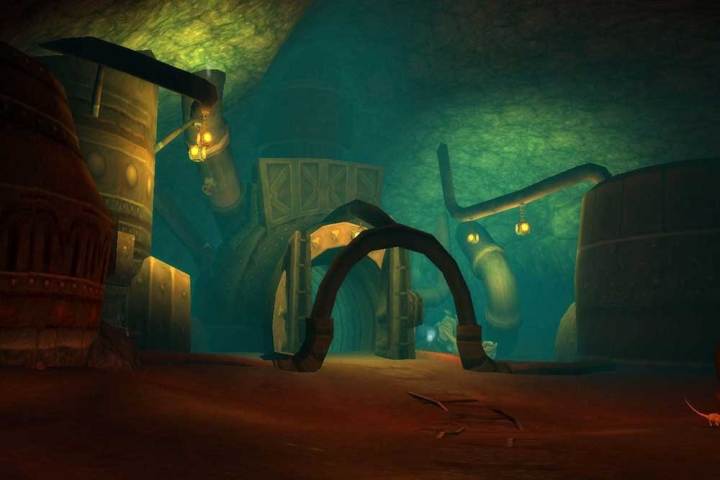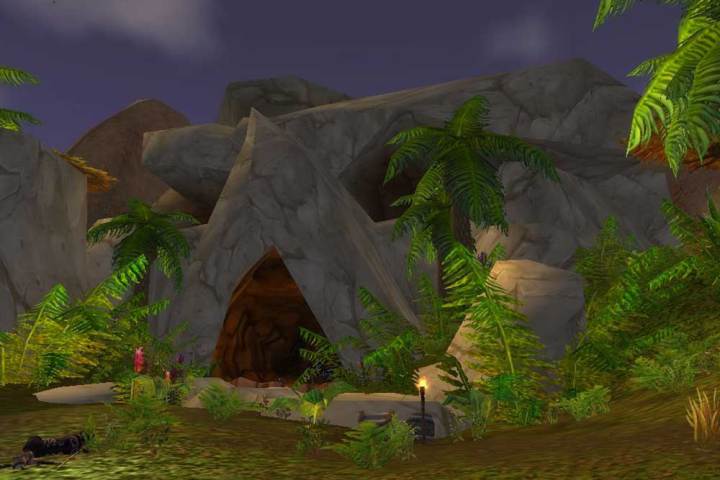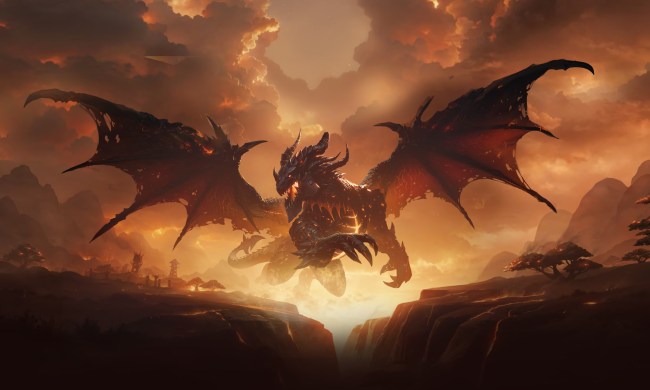Tanking in World of Warcraft is one of the most stressful experiences you can have. People’s lives are on the line, and you’re the main cog separating them from hefty repair bills and long walks back to a rotting corpse. But with a constant need for these meat shields, tanking in World of Warcraft Classic is a sure-fire way to get into groups fast.
In this WoW Classic tanking guide, we’re going to touch on tanking classes, general builds and rotations, and some handy tips and tricks to stop your first true WoW Classic dungeon tanking experience from scaring you into being yet another player screaming into the void for a group with a free DPS slot. Not ready for the tank life? Let us guide you through which class might be right for you.
Warrior tank guide

Warriors are by far the more involved tanking class in World of Warcraft Classic. Great tanks will often “stance dance” use macros to make use of abilities locked behind specific equipment and stances. For the sake of simplicity, we’ll be focusing on the Protection tank – your general sword and board muscle machine.
Protection Tanks use a sword and shield combo to deal and mitigate damage. A shield adds the largest amount of armor a single piece of gear can offer in World of Warcraft, so its benefits are clear. You’ll use your shield to interrupt enemy casts with Shield Bash and Shield Slam for aggro. Sunder Armor works in a similar way, only it reduced a target’s armor with each stack, keeping the target focused on you and allowing your team to deal more damage.
Try applying one stack on each enemy in a pull to generate initial aggro, then focus on reaching the five stack max on the main target while tab-targeting the others for attacks like Shield Slam, Revenge, and Taunt when necessary. Demoralizing Shout can help with AoE aggro generation while hopping into Battle Stance for Thunder Clap can help mitigate damage in the long-run against larget packs. Mocking Blow can be used if Taunt isn’t up, too. Dump rage with Heroic Strike for high threat generation, or Cleave at higher levels against multiple targets. Defensive cooldowns like Shield Wall should be used against bigger pulls and bosses to take the pressure off your healer.
Warrior talent specs and build
Warriors can tank in any number of ways, but building into the Defensive talent tree will have the more obvious benefits. That being said, with a lack of skills when it comes to tanking your first couple of dungeons, speccing into Improved Rend in the Arms tree first will help with threat generation more than anything else. It’s a decent enough spec for Prot Warrior leveling, but don’t expect quick and easy kills.
Improved Sunder Armor, Taunt, and Revenge will be ones to aim for at later levels. At max level, scrubbing the talent tree will be necessary. Reach the bottom of the Protection tree, swap Improved Rend for Deflection, max out Tactical Mastery, and drop a point into Anger Management.
Paladin tank guide

Protection Paladins are the kings and queens of larger pulls. Righteous Fury grants them 60% more Threat generation from their Holy attacks for a whopping 30 minutes. Devotion Aura can also reach an additional 25% Armor bonus by the time you’re ready to tank your first dungeon.
Mixed with the lingering AoE ticks of Consecration, the Holy damage added to each attack with Seal of Righteousness, and the Holy damage attackers are hit with during Holy Shield, Paladins can draw in large crowds and keep them there with ease. It’s largely recommended to pull with your highest rank abilities before holding with Rank 1 versions to save on mana. Where problems arise for the Protection Paladin is if and when a monster breaks from the fold.
Without a version of the Warrior’s Taunt, trying to draw the attention of a peeled mob can be difficult, and is largely a good time to use Judgement, or to use Hammer of Justice or Blessing of Protection to avoid a party member taking lethal damage in the process.
Paladin talent specs and build
Far less room for personal preference here makes the Protection Paladin tank a simpler beast to tame. You absolutely need the Consecration talent. Drop points into Divine Strength and Improved Seal of Righteousness to reach that and gain substantial threat generation boosts. From then on, you want to build down the Protection tree to get Holy Shield before dumping your final nine points into Benediction and Deflection in the Retribution tree.
Druid tank guide

Druids make use of their unique Shapeshifting abilities to fill any role spot that might be open in a group. By using the Bear, and later Dire Bear, form, a Druid can become a very bulky melee tank, using Rage similar to a Warrior to hold aggro with various attacks and roars.
While not a common choice for end-game raids, Feral Druid builds are popular leveling choices due to the use of a single talent tree. The natural armor increase granted by Bear Form means gearing up is easy, and the Feral Druid can easily swap between melee DPS in Cat Form and melee tanking in Bear Form at the touch of a button. Gaining access to Swipe at level 16 is an important step, allowing the Bear Form Druid to reliably hold aggro on enemy packs relatively easily.
Bear Druid’s answer to a Warrior’s Heroic Strike is Maul, a “next melee” attack useful for holding aggro on a single target. Growl fills in for Taunt, while Swipe can help maintain aggro on whole packs of mobs. Bash can be used fairly frequently to interrupt casts or hold a mob that’s about to lose aggro.
Druid talent specs and build
Bear Form Druid is an easy one to build even early on. By the time you reach Deadmines or waltz in late to Wailing Caverns, Ferocity and a few points into Feral Instinct will have you casting more Mauls for less rage and more threat.
From there on, focus on offensive gains to generate more aggro from damage while allowing you to swap into Cat Form for extra damage at later levels when you’ve solidified threat on your targets and know the healer can handle the armor drop-off from your stance change. Furor and Nature’s Grasp are two talents you’ll pick up in opposite trees.
How to tank at the Ragefire Chasm

Count yourself lucky if you’re rolling Horde or manage to chance your way into Orgrimmar. Ragefire Chasm is the lowest-level dungeon in the game. Its simple pathing and basic mechanics make it the easiest, too — a great way for newcomers to practice tanking.
Ragefire Chasm has a mix of Elemental and Trogg enemies for the most part; many of which are melee-based. If there’s a ranged-based attacker like a Shaman, chances are there’s only one in the pack.
Just grab the melee mobs and waddle over to the shaman to group them up. Tab-target to maintain aggro. Warrior or Druid tanks will want to use shouts when possible.
How to tank at the Deadmines

If you’re leveling up on the Eastern Kingdoms, chances are The Deadmines over in Westfall will be your first real taste of a 5-man dungeon. It’s a claustrophobic series of tunnels where you’ll have little choice but tackle larger groups of enemies. There are plenty of non-elites working the rocky walls, so prepare to put up with these stragglers in your elite packs.
Tanks will need to check their corners to avoid pulling excess enemies. Occasionally, an additional Elite pack consisting of three entirely different human mobs will sneak up from behind areas you’ve already cleared, so prepare to peel these from the rest of the party pretty quickly if they latch on. Break the line of sight on ranged attackers to save running around the map potentially pulling more mobs in the process.
Each tank class will need to keep tab-attacking targets to maintain aggro, so Warriors should avoid attempting to use Rend on immune Mechanical enemies to avoid starving themselves of Rage. Pull each pack back from their initial starting positions if possible to avoid low-HP enemies running off and attracting more.
How to tank at the Wailing Caverns

Relatively accessible if you’ve been leveling in Kalimdor already, Wailing Caverns, situated in the Barrens, is another entry-level dungeon and well suited to a first-time tank. If you’re coming here from Ragefire Chasm, prepare for your first taste of non-linear dungeon exploring.
Most enemies in this dungeon can heal themselves and cast Sleep on you and your teammates. It’s a good a time as any to use learn tab-targeting and get used to using any stuns and interrupts you may have to avoid getting overwhelmed. Be careful with the number of mobs you pull at any one time.
Outside of the tip that will take you all the way to level 60, just watch for incoming crowd-control effects, get your team to cast some of their own to make things a little easier, and reap the rewards of this raptor-filled dungeon. Even the bosses cast heal and sleep spells. Again; it’s a great time for Shield Bash.



